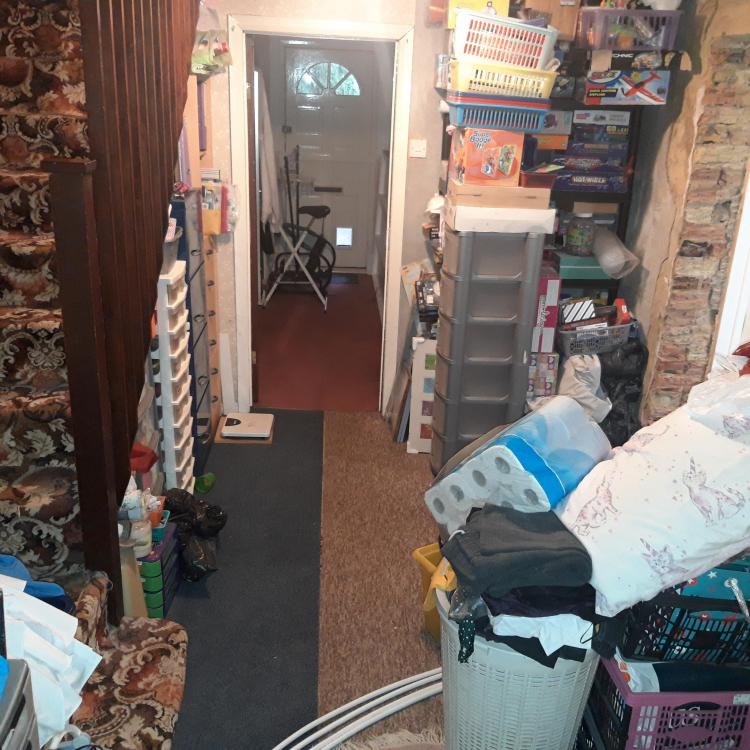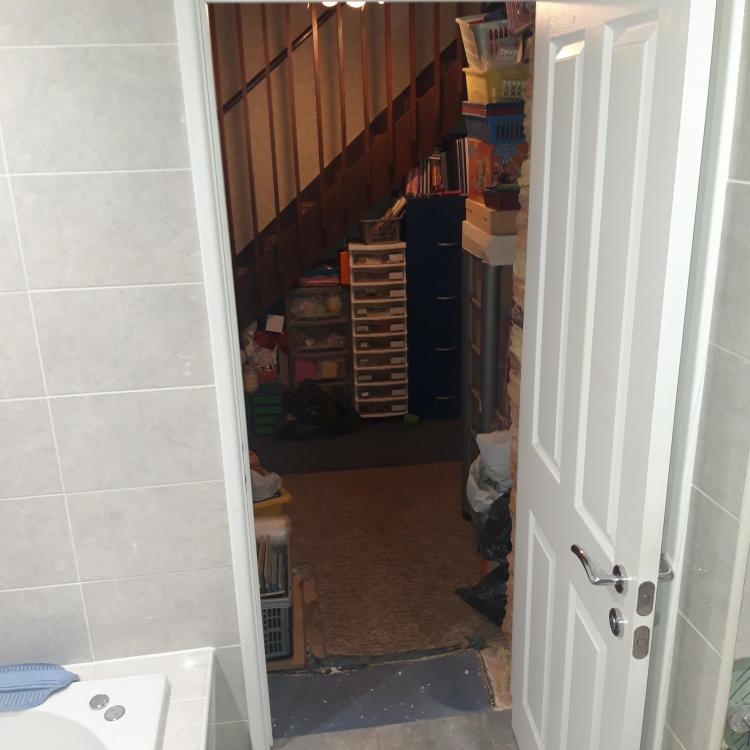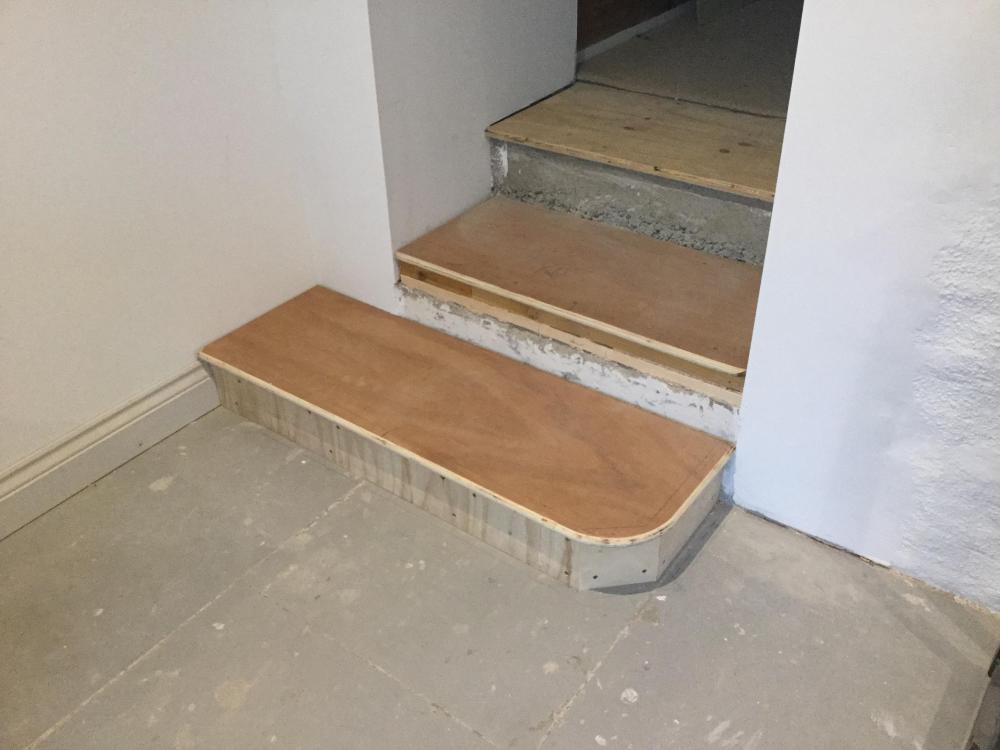Leaderboard
Popular Content
Showing content with the highest reputation on 10/04/20 in all areas
-
This is a weird thread, guy comes on asking for advice and opinions but then discounts everything that anyone says because he's only looking for confirmation that his way is the best way. Timber frame has been around for years and years, in wet/humid climates you will notice that the number of Timber frame houses built in those climates over the last 50-100 years compared to concrete structures is very different. Just because something can be done badly doesn't mean it has to be done badly...3 points
-
Buy an electric heated throw. An absolute game changer when it’s that time of year when you feel a bit cold when sitting around but it’s not really cold enough to heat the whole house.2 points
-
new council housing in york with some self build as well https://www.msn.com/en-gb/news/uknews/this-is-the-everest-of-zero-carbon-–-inside-yorks-green-home-revolution/ar-BB19GYj4?li=AAnZ9Ug1 point
-
Nothing dedicated to modelling, there may be some interesting stuff in Boffins Corner. No secret knowledge between members. The ones of us that are interested/trained in it tend to give our tuppence worth. It is often hard to trust models, especially ones that are hard to verify against real world conditions, all models are wrong, but some models are useful. The man thing is to stick to basic engineering principles and physics. A house is not really complicated after all, try modelling a car, boat or an aeroplane, and they work.1 point
-
I have a TF house. It does not move, creak or in any way feel flimsy. I chose this as I wanted every part of my wall make up to be insulation. So Insulated timber frame with external insulation and render. Very low energy house.1 point
-
47x220 C24 at 400mm centres will just do that span but will have some deflection in it. Reduce to 300mm centres and you may get away with 47x195 C24 but again, it will flex. If you went to an I-joist then a JJI195C at 300mm centres would work with hangers but centre deflection would be 10mm so not sure if that would be acceptable.1 point
-
I took 10mm off one for a lad at work with a hacksaw and file not so long ago. Held in the vice wrapped in cloth. Came out spot on. And I thought they were taking the piss as an apprentice when they said we should be able to hacksaw to within 20 thou!1 point
-
Why would you..? Concrete slab - Concrete screed - Concrete slabs There is nothing with an adverse expansion coefficient so why start introducing a flexible adhesive ..? I expect the slabs are recommended with a thin mortar bed too.1 point
-
Not sure exactly what the solution is here, but would something like this help?1 point
-
Surges can kill delicate electronic thing like CH controls, fax machines (are they still a thing? ?), PCs. Not worth the risk of not unplugging.1 point
-
Any need to keep the UFH and CH hydraulically separated? Do you have a mag filter and clean inhibited water in the system atm? Should have with the number of times you’ve dropped it. Will there be any instance when the bathroom UFH will need to run WITHOUT ANY other CH running? If not, that reduces the buffer size hugely as the rest of the system will form part of the buffers duty. Something like this will suffice if so. Roughly twice the size of a shoebox.1 point
-
1 point
-
1 point
-
Not really. It’s 17 degrees in here today but the electric is going off on Tuesday all day for emergency repairs up the road or something. I wasn’t going to put on the UFH for the heating to then be off for ages and have the temperature drop down again. They are supposed to be lending me a generator but god knows how that will work out. I need to power the router and the laptop so that I can work from home. If it can also power a 3kw heater I may put that on.1 point
-
ARC did it, they were happy with the single method as it was warrantied itself. The underlying insurer went bust but the policy was covered by another business so still in place. TBH - I only took out the whole building warranty to make it mortgageable and sellable, I would never expect to claim on it or for them to ever pay out given what I've heard. As you say, a drained cavity is a pointless expense if you use WPC, external would make more sense for belt and braces but that itself is no guarantee as it's only as good as its application and needs to be protected during backfill to avoid puncture by stones etc.1 point
-
Yes, but it is much better to learn it yourself. All you need is the material properties. The Conductivity, the SHC, the density and an hour on Google. But having said that, like cars, people will not be convinced as we know lightweight is hopeless. Keep adding mass, hang the extra energy needed and eventually you will have a cold cave.1 point
-
We built a passive basement and house. Basement is cast in situ concrete (300mm thick) using the Sika waterproofing system (water bars, admix & plugs) - it is inspected on site by a Sika rep and once approved comes with 25 year warranty. We chose this method over ICF since we're entirely reliant on this single waterproofing system and wanted to see the quality of the pour for each section. This is one of the few downsides of ICF, you have to trust the quality of the pour as you can't see it. As the water table sits at 6m below ground level and the basement is 3m below ground, we did not see the need for external membrane (which needs perfect application) or internal membrane (assumes a leaky wall and needs sump + pump + backups etc). Basement sits on a 300mm thick slab of EPS 200 which extends beyond the slab and there are vertical walls of 200mm EPS 70 applied to the exterior of the basement walls. We used insulated MEA GRP light wells (simple window holes left in structure) and have an external door to a concrete staircase to ground level for emergency exit and to meet fire regs (alternative is sprinkler system). Basement is the full footprint of structure above and acts as the house foundation. Land drain at basement perimeter to soakaway and the 1m working space was backfilled with clean stone which acts like a giant French drain around the property. The house is a MBC passive twin wall timber frame - the inner frame is load bearing and sits on the edge of the concrete wall, the basement vertical insulation spans the twin wall gap and the exterior wall leaf sits on this. When the system has the insulation blown into it, there is an uninterrupted insulated layer that wraps around the house. Basement is inherently airtight as concrete and there is an airtight fabric taped to inside basement wall, up over GF and to inside wall of frame. GF is pozi joists over a steel web that sits in precast pockets in the basement wall. Essentially we mimicked the MBC foundation detail where the frame interfaces the basement walls. Our design was 'open box' by choice but no reason you couldn't do a 'sealed box' and have a slab at ground level - just need some thought on your heating strategy as in a normal passive slab you put the UFH pipes in the slab vs on top in screed. That would work in a basement GF slab also, you'd loose a bit of heat to the basement walls but doubt it would make a big difference. TBH, a passive standard house needs so little heat injection that you barely use the heating at all. Many here use the slab to cool the house in summer (needs ASHP) so that may be a consideration also. UFH on GF only, wet system in spreader plates under floor deck. No heating in basement or upper floors aside from bathroom towel rads and electric UFH under the tiles. UFH comes on for 2-3 months max over winter. Gas boiler used for that and DHW, solar PV on east roof with a diverter to top up UVC tank with immersion heaters before exporting. Big sliders downstairs, every window is triple glazed so house is super quiet. External motorised shutters on east aspect (street side) + east & south Velux which greatly reduces daytime solar gain, increases privacy and removes need for curtains. West side has curtains in bedrooms and gauzy drapes in living/dining room. We do get a bit of overheating in summer, later in the day, usually because we're not that disciplined keeping the doors closed during summer. MVHR obviously. MBC frame can support a render system (battens, render board & render) or practically any other finish - timber cladding, brick etc. As mentioned in other posts, basement cost variable is your ground conditions followed by your site access etc. You only really know what conditions you have following a ground investigation report - this is usually a combination of desk survey (to see what is expected to be there based on historical data), dynamic probing to 10m (measuring ground resistance) and some core samples. Gas and ground water monitoring is often required too. The SE should spec the investigation to ensure they get the data points they need and will then interpret the data to see what design and build method is required - i.e. sheet pile retaining walls if the soil is too soft to self support during construction etc. You then get a design which will include the bar schedules etc and shop it around local groundworkers to get a quote. most will sub out the concrete works to a specialised crew but will take care of the excavation and infill themselves. You can include other groundworks, site prep, services etc as part of the same package. Hope all of this helps.1 point
-
1 point
-
Time to resurrect this and FINALLY get some heat in the bathroom. Discussing with SWMBO and got our mojo back hopefully to take on projects (bereavement etc). Plan then is to clear the "stairs room", that is central to the house, dig up the floor and build back up with insulation (like I did with the bathroom). Laddo back to uni so his delicate gaming rig is out of the way so I can't be moaned at for covering that in dust! Digging up and barrowing is then then 12/15' straight run out the front door. To recap, plan is a manifold bolted to the wall under the stairs. One loop to the bathroom, another to the towel rail in there. Then I'll take loops off to all the other rooms in the house. I "love" this shot from my clean modern bathroom out into the rest of the bomb site house! ? Mind, that was always the plan to retreat to somewhere warm and comfortable. If I can now get it warm! Under this strip of blue carpet tiles runs my single pipe 22mm CH pipe. First question, bfo oil boiler, what size buffer tank to I need to serve the UFH? Intend to feed this buffer from the single pipe under the floor. SWMBO concerned about losing storage space under the stairs. Cheers (Hoarders, us? ?).1 point
-
1 point
-
20x20 will be around half a cube of concrete so it won’t be going anywhere ..! Blocks set in a dry haunched mix may be better and quicker.1 point
-
Modern estates use teams of brickies - it’s not unusual to see different mortar beds, bonds etc as you move up a building. It is also why when you have two working together that haven’t before, only one does the setup of the corners unless they are using profiles.1 point
-
Valley tiles are a bit forgiving and will cope with 8 degrees difference in pitch, after that they will start to kick up tiles. I like grp valley formers but valley tiles are best1 point
-
1 point
-
20 degrees downstairs and 18 degrees in the bedroom. I haven’t switched the heating on yet though so it’s a bit cooler than that but not that bad.1 point
-
Mineral gypsum has a density around 2900kg/m3, gypsum as in plasterboard/plaster has a density around 850-1000kg/m3. No, air permeability is a bulk process. Water vapour can escape by a process known as diffusion, this is a molecule by molecule process which bulk air cannot do. It is this process that vapour resistance values relate to. It is perfectly possible to have an airtight house which has little vapour resistance. Anything described as a 'breather membrane' should have a low vapour resistance while inhibiting the movement of bulk air. The cellulose does not get wet. The external air heats up as it moves into the wall by absorbing heat from it. This greatly increases its ability to carry water vapour (its relative humidity or RH is decreased). In warmer climates where the external air is warmer than the structure it can be a problem, but not in the UK.1 point
-
Ferd. The wheel on that trolly is not locked. I'm no grass, but i'm phoning H and S.1 point
-
@andy did you ever get around to producing an updated version of your schematic from what you originally posted here? If you did I would be interested in seeing it if at all possible? Ta1 point
-
It has a lot to do with the gauge of the block work, you should build a STOREY POLE this is a piece of timber 50x50 that will have height marks on it, it could have a mark for top of windows, top of doors, first floor height and so on, the brickies can use this to adjust their block height up or down a bit to hit the design height, over 10-12 courses of blocks gaining 1 mm per course will grow the building by 12 mm plus a brick course you can juggle things a lot. All down to good planning. Or as above just run a ledger board around the walls to simplify air tightness.1 point
-
@Roundtuit hey that's pretty groovy! I think that's an easier method of skirting on the top & middle steps/ less material & effort than joe90's idea (tho I do like his slope). But the door lining you put in the wrong spot (door @ the junction of adjacent room carpet & my top step ply). I'm a bit loathed to put an architrave vertical edge here too: I spent so damn long fashioning these wall corners, & they do look smart as is. So I'd like to follow your idea along top step > down > across on the 2nd step. And also your skirt around the wide 3rd step (maybe too). But I need to somehow meet these two skirts -without- a vertical architrave between. Also how can I cut my existing wall skirt @ 45* in situ, if I do the skirt around wide 3rd step too. Hmm.. thanks alot for that- fab resource to do that (assuming you've not nipped in & grafitti'd my upstairs- yet to look0 points
-
My heating wouldn't be on yet if it was set at 18-20C. I wouldn't be married either!0 points



.thumb.jpg.bac90f3bbf6868cf2118d010d936c99d.jpg)













